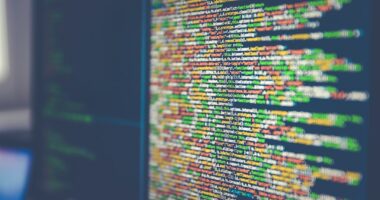Non-fungible tokens (NFTs) have taken the digital world by storm, but their origins can be traced back to the early 2010s. The concept of NFTs was first introduced with the creation of colored coins on the Bitcoin blockchain, which allowed users to represent assets other than Bitcoin on the blockchain. However, it wasn’t until 2017 that NFTs gained widespread attention with the launch of CryptoKitties, a blockchain-based game that allowed players to buy, sell, and breed digital cats. This marked the beginning of the NFT craze, as it demonstrated the potential for using blockchain technology to create unique digital assets.
Since then, NFTs have evolved to encompass a wide range of digital assets, including art, music, videos, and even virtual real estate. The key innovation behind NFTs is their non-fungibility, which means that each token is unique and cannot be exchanged on a one-to-one basis like cryptocurrencies such as Bitcoin or Ethereum. This uniqueness is achieved through the use of smart contracts on blockchain platforms, which provide a secure and transparent way to verify ownership and authenticity of digital assets. As a result, NFTs have opened up new possibilities for creators and collectors to buy, sell, and trade digital assets in a decentralized and secure manner.
The rise of NFTs has also sparked debates about their environmental impact, as the energy consumption of blockchain networks used to create and trade NFTs has come under scrutiny. Despite these concerns, NFTs continue to gain traction in the digital art and collectibles market, with high-profile sales and collaborations driving further interest in this emerging asset class. As the technology continues to mature, it is likely that NFTs will become an integral part of the digital economy, offering new ways for creators to monetize their work and for collectors to own and trade unique digital assets.
NFT Jobs: The Emerging Opportunities in the NFT Industry
The rapid growth of the NFT market has created a demand for professionals with expertise in blockchain technology, digital art, and collectibles. As a result, a wide range of job opportunities have emerged in the NFT industry, spanning roles such as NFT developers, digital artists, marketing specialists, and legal advisors. NFT developers play a crucial role in creating and maintaining the infrastructure for NFT platforms, including smart contracts, decentralized marketplaces, and digital wallets. These professionals require a deep understanding of blockchain technology and programming languages such as Solidity, as well as experience in developing secure and scalable decentralized applications.
In addition to technical roles, there is also a growing demand for digital artists who specialize in creating NFTs. These artists leverage their skills in digital art and design to produce unique and visually stunning NFTs that appeal to collectors and enthusiasts. With the rise of virtual reality and augmented reality technologies, there are also opportunities for artists to create immersive and interactive NFT experiences that push the boundaries of traditional art forms. Furthermore, marketing specialists play a crucial role in promoting NFT projects and connecting creators with potential buyers. These professionals use their expertise in digital marketing and community management to build awareness and engagement around NFT collections, helping creators reach a wider audience and maximize the value of their digital assets.
As the NFT market continues to mature, there is also a growing need for legal advisors who can navigate the complex regulatory landscape surrounding digital assets. These professionals help creators and platforms comply with intellectual property laws, licensing agreements, and tax regulations, ensuring that NFT transactions are conducted in a transparent and legally compliant manner. Overall, the emergence of these job opportunities reflects the growing significance of NFTs in the digital economy, offering diverse career paths for individuals with a passion for technology, creativity, and innovation.
NFT Artists: How Digital Creators are Embracing Non-Fungible Tokens
NFTs have revolutionized the way digital artists monetize and distribute their work, providing new opportunities for creators to showcase their talent and connect with a global audience. Digital artists are embracing NFTs as a means to sell their artwork directly to collectors without relying on traditional galleries or intermediaries. This direct-to-consumer model allows artists to retain more control over their work and receive a larger share of the sales proceeds, empowering them to build sustainable careers in the digital art space.
One of the key advantages of NFTs for artists is the ability to create scarcity and exclusivity for their digital creations. By minting limited edition NFTs or one-of-a-kind pieces, artists can tap into the collector’s mindset and drive demand for their work. This has led to a surge in high-value sales of NFT art, with some pieces fetching millions of dollars at auction. The ability to prove ownership and authenticity through blockchain technology has also helped artists combat issues such as copyright infringement and unauthorized reproduction of their work, providing a secure and transparent way to protect their intellectual property rights.
Furthermore, NFTs have enabled artists to experiment with new forms of expression and interactivity in their work. From generative art that evolves over time to interactive experiences that respond to user input, NFTs have expanded the possibilities for digital art beyond static images or videos. This has attracted a diverse range of creators, including traditional artists, graphic designers, 3D modelers, and multimedia artists who are exploring the potential of NFTs to push the boundaries of art in the digital age.
Overall, NFTs have empowered digital artists to take ownership of their creative output and explore new avenues for monetization and self-expression. As the market continues to evolve, it is likely that we will see further innovation in the way artists leverage NFTs to engage with their audience and redefine the value of digital art.
NFT News: The Latest Developments and Trends in the NFT Market
| Date | Event | Impact |
|---|---|---|
| March 2021 | First NFT artwork sold at auction | Increased interest in NFTs |
| April 2021 | NFT market reaches 2 billion in sales | Growing market size |
| May 2021 | Musician sells NFT album for 11.7 million | Rising value of NFTs in music industry |
| June 2021 | NFT art marketplace sees record sales | Continued growth in NFT art market |
The NFT market is constantly evolving, with new developments and trends shaping the landscape of digital art and collectibles. One of the key trends in the NFT space is the growing interest from mainstream brands and celebrities who are entering the market to capitalize on the hype surrounding NFTs. This has led to high-profile collaborations between artists, musicians, athletes, and fashion brands who are leveraging NFTs as a new channel for engaging with their fan base and monetizing their intellectual property.
Another trend is the rise of virtual worlds and metaverse platforms that are integrating NFTs into their ecosystems. These platforms offer immersive experiences where users can buy, sell, and display their NFT collections in virtual environments, blurring the lines between physical and digital ownership. This trend has sparked discussions about the potential for virtual real estate and virtual goods to become valuable assets within these virtual worlds, creating new opportunities for creators and investors alike.
Furthermore, there is a growing focus on sustainability and carbon neutrality within the NFT space, as concerns about the environmental impact of blockchain networks used for minting and trading NFTs continue to gain attention. This has led to initiatives aimed at reducing the carbon footprint of NFT transactions through the use of eco-friendly blockchain networks and offsetting mechanisms. As a result, we are likely to see an increasing emphasis on sustainable practices within the NFT market as stakeholders seek to address these environmental concerns.
Overall, these developments reflect the dynamic nature of the NFT market and its potential to reshape how we create, consume, and interact with digital assets. As new trends emerge and existing ones evolve, it is clear that NFTs will continue to be a driving force in shaping the future of art, entertainment, and commerce in the digital age.
NFT Platforms: Where to Buy, Sell, and Create Non-Fungible Tokens
The popularity of NFTs has led to the emergence of various platforms that cater to different aspects of buying, selling, and creating non-fungible tokens. These platforms provide creators with tools to mint and showcase their NFT collections, while also offering collectors with marketplaces to discover and purchase unique digital assets. Some of the leading NFT platforms include OpenSea, Rarible, Foundation, SuperRare, and NBA Top Shot.
OpenSea is one of the largest decentralized marketplaces for NFTs, offering a wide range of digital collectibles including art, domain names, virtual worlds, and more. The platform allows users to create their own storefronts and list their NFT collections for sale or auction. Rarible is another popular platform that enables creators to mint their own tokens without coding skills using its “lazy minting” feature. This has made it easier for artists to tokenize their work and reach a global audience without high upfront costs or technical barriers.
Foundation is known for its curated selection of high-quality art NFTs from emerging and established artists. The platform focuses on fostering a community-driven approach to discovering and collecting digital art while providing creators with a platform to showcase their work to a discerning audience. SuperRare is another platform that specializes in rare digital art by leading artists in the space. It offers limited edition artworks that are tokenized as unique NFTs with provenance on the Ethereum blockchain.
NBA Top Shot has gained attention for its innovative approach to tokenizing basketball highlights as officially licensed NFT collectibles. The platform allows fans to buy packs of moments featuring their favorite players or teams, creating a new way for sports enthusiasts to engage with basketball culture through digital collectibles.
Overall, these platforms cater to different niches within the NFT market, providing diverse opportunities for creators and collectors alike. As the ecosystem continues to expand, we can expect to see further innovation in how NFT platforms enable new forms of creativity and commerce in the digital space.
NFT Collectibles: The Growing Popularity of Digital Art and Collectibles

NFT collectibles have become a major driver of growth in the non-fungible token market, attracting collectors from around the world who are eager to own unique digital assets. These collectibles span a wide range of categories including art, music, videos, virtual goods, trading cards, and more. One of the key factors driving the popularity of NFT collectibles is their ability to provide provenance and scarcity for digital assets that were previously difficult to authenticate or monetize.
Art collectibles have been at the forefront of this trend, with high-profile sales of digital artworks fetching millions of dollars at auction. This has led to increased interest from traditional art collectors who are exploring new ways to diversify their collections with unique digital pieces. Music collectibles have also gained traction through initiatives such as “tokenized albums” where musicians release limited edition NFTs alongside exclusive content or experiences for fans.
Virtual goods such as skins, avatars, and accessories for video games have become sought-after collectibles within gaming communities. Players can buy and sell these virtual items as NFTs on specialized platforms or within gaming ecosystems that integrate blockchain technology. This has created new opportunities for game developers to monetize their content while providing players with tangible ownership over their in-game purchases.
Furthermore, trading cards have seen a resurgence in popularity through NFT marketplaces that offer digital versions of classic card games or collectible card series featuring iconic characters from pop culture. These digital trading cards often come with unique attributes or special abilities that make them valuable within gaming or collecting communities.
Overall, the growing popularity of NFT collectibles reflects a shift towards embracing digital ownership as a legitimate form of collecting and investing. As more creators explore this space and more collectors enter the market, we can expect to see further innovation in how NFT collectibles are created, traded, and experienced.
NFT Regulations: The Legal and Ethical Considerations of Non-Fungible Tokens
The rapid growth of the NFT market has raised important legal and ethical considerations surrounding intellectual property rights, copyright infringement, consumer protection, and environmental sustainability. As a result, regulators around the world are grappling with how to address these issues while fostering innovation in the blockchain space.
One key area of concern is intellectual property rights for creators who tokenize their work as NFTs. Artists need clear guidelines on how their rights are protected when they sell or license their work as non-fungible tokens. This includes issues such as resale royalties for secondary sales of NFTs or licensing agreements that govern how their work can be used by buyers or licensees.
Copyright infringement is another challenge within the NFT space as unauthorized reproductions or derivative works can be easily created and distributed on blockchain networks. Platforms that host NFT marketplaces need robust content moderation tools to prevent infringing material from being listed or traded without proper authorization from rights holders.
Consumer protection is also an important consideration as buyers need transparency about what they are purchasing when acquiring an NFT. This includes information about provenance, authenticity, ownership rights, and any associated terms or conditions that govern how they can use or display their digital assets.
Environmental sustainability has become a pressing issue due to concerns about the energy consumption of blockchain networks used for minting and trading NFTs. Regulators are exploring ways to incentivize eco-friendly practices within the industry while minimizing the carbon footprint associated with blockchain transactions.
Overall, addressing these legal and ethical considerations is crucial for ensuring that the NFT market can continue to grow in a responsible manner while protecting the rights of creators and consumers alike. By establishing clear regulations that balance innovation with accountability, regulators can help foster a healthy ecosystem for non-fungible tokens that benefits all stakeholders involved.
Additionally, promoting transparency and ethical practices within the NFT market can help build trust among participants and attract more mainstream adoption. This can ultimately lead to a more sustainable and reputable NFT market that is able to withstand potential challenges and controversies. Therefore, it is imperative for industry leaders, regulators, and participants to work together in addressing these legal and ethical considerations to ensure the long-term success of the NFT market.
If you’re interested in learning more about the history of NFTs and how they were created, you should check out this article on NFT-Jobs. This article provides a comprehensive overview of the origins of NFTs and their evolution in the digital art world. It’s a great resource for anyone looking to delve deeper into the world of non-fungible tokens.
FAQs
What are NFTs?
NFTs, or non-fungible tokens, are digital assets that represent ownership or proof of authenticity of a unique item or piece of content, such as art, music, videos, and other digital files.
When were NFTs created?
NFTs were first created in 2014 with the launch of the Ethereum blockchain, which enabled the development and trading of non-fungible tokens.
How do NFTs work?
NFTs are created, bought, and sold using blockchain technology, which ensures the uniqueness and ownership of the digital assets. Each NFT has a unique identifier and metadata that distinguishes it from other tokens.
What can be turned into an NFT?
Almost any digital file can be turned into an NFT, including artwork, music, videos, tweets, virtual real estate, and more. The NFT serves as a certificate of ownership and authenticity for the digital content.
Are NFTs environmentally friendly?
The creation and trading of NFTs have raised concerns about their environmental impact due to the energy consumption of blockchain networks. Some blockchain platforms are working on more sustainable solutions to address these concerns.





